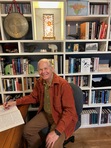Review: S.A. Chakraborty’s Daevabad Trilogy — A Fantasy Rooted in Ancient Power
The second book in my 1001 series, The Qaraq and the Maya Factor, casually alludes to a major Hindu concept, Maya. The concept is defined as Illusion, the power by which the universe becomes manifest, the illusion or appearance of the physical world. The illusion that our physical world is ‘reality’ prevents us from perceiving a higher awareness, of the infinite cosmos or the interconnectedness of all things.
In The Qaraq and the Maya Factor, the illusion is more banal, the distractions we face with our daily tasks and obsessions, so steeped in the physical world. But Maya prevents the qaraq, a group of interconnected souls who have the power to recall their past lives in their present existence, from seeing their incarnations. They battle this blockage and learn how Maya affects – and protects – us on many levels.
Why I’m Drawn to Indian Culture and SpiritualityTo write a series based on reincarnation as an assumed reality has me rubbing elbows with Hindu sages, teachers, and believers. But I love Indian culture as well, its food, its music, its films, its dance. Hearing Anoushka Shankar at New York’s Town Hall the other month reminded me that I have adored this culture from a very young age.
Backpacking in Europe after high school, I was wandering around Hyde Park in London one summer afternoon and came across an interesting building. A woman approached me and offered me an extra ticket to the concert inside. I had no idea the building was the Royal Albert Hall and that the concert artist was Ravi Shankar. But I had listened to his music for years and was thrilled at my luck to hear him live for the first time. Many decades later, there I was at Ravi Shankar’s daughter’s concert, an incredible mix of classical and contemporary style.
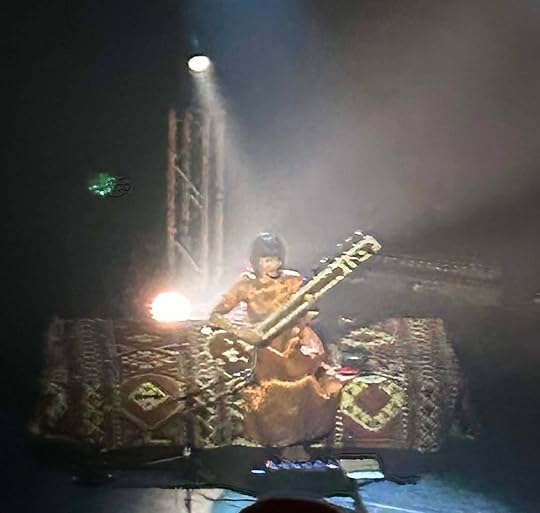 Discovering the Daevabad Trilogy
Discovering the Daevabad TrilogyWhen I learned of Shannon Chakraborty’s fantasy series, the Daevabad Trilogy, set in a mythical world that mixed Hindu, Muslim, and Zoroastrian references with modern language, I was easily attracted to it.
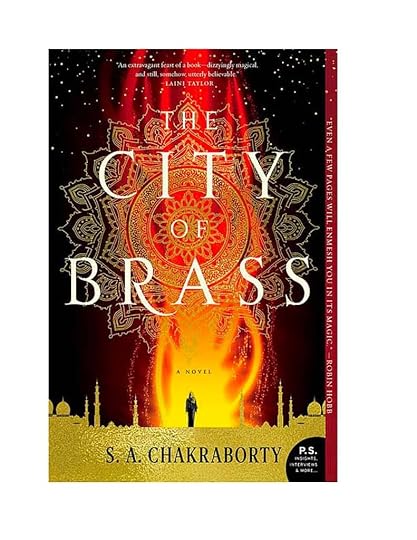
It’s a trilogy (that suggests more to come) of three very big books. There are lots of names of characters and places, loads of detail of food and clothing and geography, but the prose flows like the watery entities that inhabit the book. It satisfies a reader’s need for a complex epic and a page-turner, simultaneously.
My series moves around The Thousand and One Nights, and although I feel a kindred spirit with the cultural land of Chakraborty’s work, there is little specific reference to the Nights. The most common bond is that the population of the book is made up of:
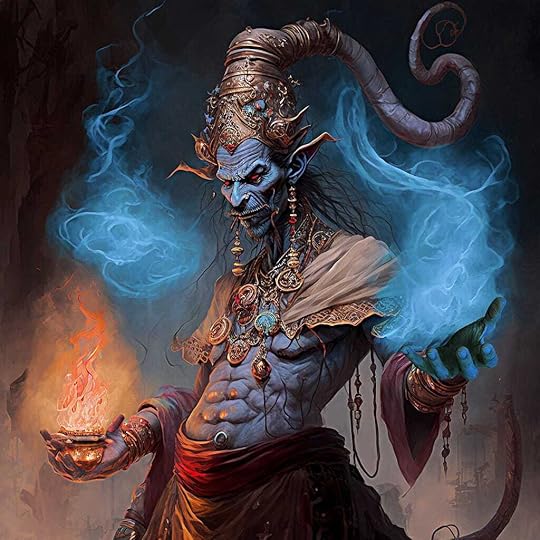
Djinn,
Ifrit,
Marid,
and other preternatural beings that crop up in the Nights’ tales. But when a ‘genie’ appears in the Nights, it is always in service of a plot point, giving the being as much character as needed for the situation. But Chakraborty gives us an encyclopedic taxonomy of each race, including a political and historical perspective on their interrelationships. In fact, I’d say one of the main actions of the series is the uncovering of mysteries and hidden truths in the history of the races in this world.
Characters That Command the PageBut it is the individual representatives of these races that is the greatest delight of the Trilogy. The arc of the first book takes us from the main character Nahri’s roots in the poorest neighborhoods in Cairo to the royal quarter of the most powerful city in the supernatural world, the City of Brass (the title of the first book).
Because of her roots as a survivor and street thief, Nahri has a mouth on her; her colloquial speech and attitude help bridge our world with that of non-humans. Her journey toward discovery of her true nature and power is the last thing in the world she wants, so she struggles mightily against everything happening to her.
And the Number One thing happening to her is that she requires the protection of Dara, a monstrous form whom Nahri has awakened from a much needed sleep away from the world. They need each other, but despise each other’s very being.
One of the most intelligent navigations Chakraborty makes is that the long game of the romantic arc between Nahri and Dara seems unlikely and dangerous. We feel just as sure they shouldn’t be together as they should. As the books continue, their bond grows deeper and deeper, but at the same time becomes more ruinous. There is nothing inevitable or expected about this romantic relationship.
Nahri’s relationship with Ali is more typically rom-dram, with their clashing races and backgrounds, despite their similar passions and intentions.
Again, the romance is long and slow and never obvious; the reader could be happy with a sibling-like interaction developing between them. Yet they have wonderful edgy banter and we root for them as a couple, given that their society is totally against it. As is Dara: the love triangle that heats up between the three of them is the most expected development among them.
 Power, Vulnerability, and the Stakes of Emotion
Power, Vulnerability, and the Stakes of EmotionI’d say the biggest achievement in the creation of these characters is the depiction of their power. Military, magical, herbal, societal, revolutionary – each character has at least one tremendous physical power and one searing emotional power. Everyone is a force to be reckoned with.
There is plenty of time to develop their three-dimensional attributes, but I found myself looking at a softer side, or a more complex angle to a personality, or a back story that justifies some type of behavior – all this nuance made me reassess when a character was going to wield their power. Ali’s father, the king, shows much vulnerability, but it just relaxes me as to when he will strike next. It’s an epic of attacks and feints, as in the many weapon fights during its pages.
Worldbuilding That Engages Every SenseChakraborty is equally adept at depicting the masculine, feminine, and mixed aspects of her characters and their world, which is an extraordinary accomplishment.
But I believe it goes hand in hand with her ability to paint the environments so richly. We always learn about several food items when a tray is brought in. Any entrance of a character is accompanied by what he or she is wearing that morning. Architecture, ecology, pharmacology, weaponry, they all contribute to the details of the sights, sounds, smells, and tastes in this world.
As an author, I use description minimally, perhaps because I often skip ahead when I hit a lengthy descriptive passage in a book. I did that often in Chakraborty’s writing, but I don’t criticize her for it; it’s my problem. I will say that I did it because I was anxious for the next beat in the tense action or entertaining character interaction.
Entering Daevabad: A Suspenseful TransformationThere is a wonderful suspense leading up to the entry into Daevabad, the City of Brass. The action pieces itself out brick by brick to give us enough information to be prepared for what’s coming. But like Nahri, we aren’t sure if the city is real, if we’ll ever arrive safely, or who Nahri actually is in this world until we’re inside the walls of brass.
It’s as if we, as human readers, who wouldn’t be capable of seeing this world invisible to the human race, must undergo enough historical and emotional information before we are allowed to enter. Or before we can believe what we are entering is real.
It’s a solid journey; I almost miss the mystery of its existence once we arrive and get entangled in the politics and family squabbles of the city. But there are plenty of other mysteries remaining.
Comparing Our Worlds: Elements and KarmaOne of my favorite connections to Hindu philosophy, and other cultures as well, is that Chakraborty’s creatures inhabit powers they derive from the Elements. Like igniting fire in your hand, or drawing powerful strands of water toward you. But the elements show up with geo-political importance everywhere. And in descriptions of landscape, environment, and mood, all within a scene or a character.
In my series, The Reincarnation Chronicles, the karma of past lives inhabits everything, from what the characters remember to how they interact in the present. It is all so complex and intriguing, but I’m jealous of Chakraborty taking such a basic concept as the Elements and spinning it out into such endless variations. Beautifully done.
 Balancing Multiple Storytelling Modes
Balancing Multiple Storytelling ModesWriting an extended fantasy series, I work at something else, a balance of a number of components. Dramatic action that moves the story forward. Engaging dialogue interactions between characters. Moments of interiority for the characters working out their issues. World-building sections that sink into the magic and wonder of fantastical places and creatures and concepts.
In The Reincarnation Chronicles, dramatic action and dialogue tend to happen in the present day scenes, while interiority and world-building tend to happen in the past-life stories. But that’s not a hard and fast rule, sometimes it happens in the reverse order.
In the Daevabad Trilogy, Chakraborty makes these happen in every chapter. Some may have different ratios of the elements, but actions always drive forward, characters chat wittily, magical information appears, and someone assesses what’s going on inside them.
The other very impressive technique I admired was a parsed-out exposition. Hundreds of pages into a book, we’ll get a back story about some vital piece of information. It appears when it needs to appear, when a character needs to know it, when the reader needs to know it.
I love this: working on multiple books where I must remind the reader about a story that was recalled in a previous book, I try to be incredibly frugal with how much I remind, and how the information gets out in the action. I usually err on the side of frugality, with my editor telling me I need to provide more back story here and there. But with Chakraborty, I was often dazzled by when she brought up and exposed some vital knowledge. Over the course of two thousand pages!
Why I Love Cultural Fantasy (and Chakraborty)So I adored these books, just as I adore much fiction based on cultural milieu. And especially Indian culture. Or ancient, spiritual cultures.
Last weekend, I attended a workshop about an alternative, radical method of interpreting the Tarot. Lindsay Mack’s ideas are liberating and refreshing. But the workshop was held at The Art of Living, an ayurvedic yoga retreat in the Blue Ridge Mountains. It follows the teachings of a Hindu yogi. It serves vegetarian Indian and Middle Eastern food. And its setting is in those magnificent mountains. Yes, I like to chase complex, delicious cultural experiences.
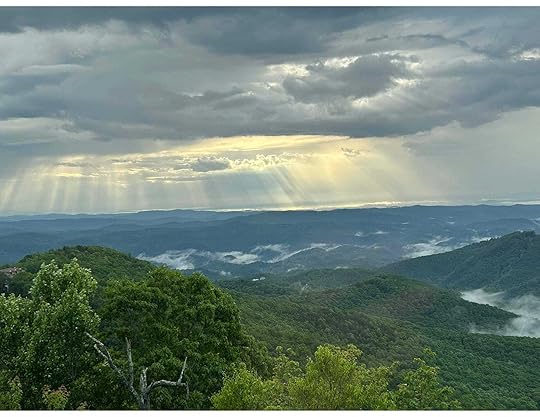 Final Thoughts: Read the Daevabad Trilogy
Final Thoughts: Read the Daevabad TrilogyThe Daevabad Trilogy includes:
The City of Brass The Kingdom of CopperThe Empire of Gold…and the companion collection: The River of Silver
by S.A. Chakraborty
If you’re a lover of deep worldbuilding, philosophical undercurrents, layered characters, and fantasy rooted in culture—these books will delight you.
For exclusive posts on cosmos and culture, book news, and free offers, join The Maqaraqan. (SEE FOOTER)
The post Review: S.A. Chakraborty’s Daevabad Trilogy — A Fantasy Rooted in Ancient Power appeared first on Qaraq Books.

